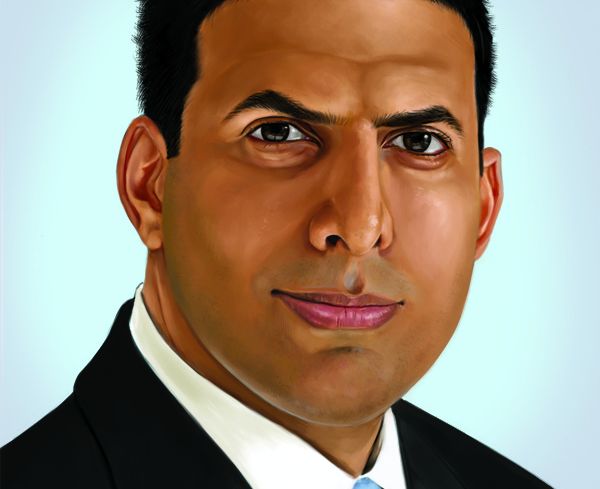Banks Wade Back Into Construction Lending–For Better or For Worse
By Sam Chandan March 27, 2014 2:00 pm
reprints
The American banking system reached another recovery milestone during the fourth quarter of last year, pushing net commercial real estate lending to its highest level on record. In keeping with recent trends, the rise in outstanding mortgage debt is broad-based, spanning both large and small markets, rather than bifurcated in favor of prime locations. This data should give us some pause, as the increased risk does not necessarily an improvement in borrowers’ credit quality.
Preliminary data for the first quarter of 2014 show more banks lending on commercial and multifamily properties in secondary markets and for noncore property types, such as buildings under construction or those that require extensive renovation, as well as on smaller assets. Reengagement by regional and community banks, as well as credit unions, is enhancing liquidity at the edges of the real estate market.
As banks and conduit lenders assert themselves in larger numbers, they are also working more aggressively to protect and grow their market shares. Lenders generally expect to ramp up their volume over the next year. That is good and bad. In some corners, lending is growing faster than borrower quality is improving. The equation is balanced by downward adjustments in underwriting standards. Where the deterioration is palpable, it is occasionally forgiven, due to the need for additional refinancing capacity, given the number of maturities at the moment.
A far cry from the beginning of the recovery, in this wave of upswing, borrowers attached to the right asset may now encounter pockets of saturation in the commercial real estate debt market. Because banks face heightened competition in making stabilized property loans to high-quality sponsors, they are being compelled to revisit opportunities to fund development projects.
Construction financing, meanwhile, is still in the early stages of its recovery and remains a weakly contested segment of the market—a situation that suits many banks just fine. Following a protracted drought in funding for development projects, banks have now increased net construction lending on nonresidential projects for three consecutive quarters. This reflects a slowly growing number of viable construction proposals, but it also results from pressures on stabilized lending.
By the numbers, net lending during the fourth quarter increased across banks’ commercial, multifamily and construction loan books of business. Default rates are down, as are residual troubled debt restructurings and other real estate owned inventory.
Delinquency and default: The default rate on commercial and multifamily mortgages held by banks declined to 1.7 percent in the fourth quarter—the lowest level in five years. Excluding apartments, the commercial default rate fell to 1.9 percent, also at a five-year low. The apartment default rate, which had exceeded the commercial default rate at its peak four years ago, is now below 1 percent. Along its current trajectory, it will fall to approximately 0.5 percent by the end of 2014, according to Chandan Economics’ baseline projections.
New lending: The balance of commercial mortgages held by banks increased to $1.1 trillion in the fourth quarter, its highest level on record, up $17 billion from the prior quarter and $36 billion from a year earlier. Across commercial and multifamily mortgages, net lending has increased by nearly $65 billion over the last year. Higher lending volumes have been an important contributor to lower default rates, which reflect the dilution of legacy precrisis loans, as well as write-downs and troubled debt restructurings.
Construction financing: Small residential properties account for a little more than 20 percent of bank construction lending. Net lending on all other projects, including multifamily and commercial real estate, has increased for three consecutive quarters, by a total of $5.4 billion since the first quarter of 2013. Loan-to-cost ratios have trended only slightly higher but understate banks’ exposure because of rising construction costs.
Real estate owned: Investors looking for distress might do better in the maturing CMBS loan market. As of the fourth quarter, the volume of commercial and multifamily real estate owned has fallen to $7.7 billion, a little more than half its peak level in 2010. Whether through write-downs or modifications, the bulk of moderate- and high-quality properties have come off the collective balance sheet. Exceptionally high recovery rates on REO sales reflect that better-quality investments were jettisoned early. Little of what remains holds institutional appeal.
Modifications and troubled debt restructurings: Where banks have modified nonperforming loans, their track record has been mixed. The balance of modified commercial real estate loans slipped to just under $21 billion in the fourth quarter. More than a third of that total has redefaulted or is again delinquent. Modified construction loans are burning off at a faster pace, but nearly 50 percent of their modified balances are again nonperforming.
Lenders’ and policymakers’ attention has focused on assessing the performance of legacy loans (i.e. those originated before the financial crisis). But in the immediate aftermath of the crisis, when the extent of losses and the implications for banking system health were uncertain, that was appropriate. As we distance ourselves from the crisis, the cyclical attention to risk is waning, introducing more problematic loans to the bank balance sheet. That is apparent in the fourth-quarter loan data, which shows signs of credit migration across key predictors of delinquency, default and loss. For instance, a larger share of loans includes interest-only periods, limiting amortization at maturity when higher interest rates already imply refinancing stress.
The takeaway? Momentum in the real estate market is always accompanied by risk, though the former has stolen the spotlight. In its shadow, we can find the seeds of future defaults.
Sam Chandan, Ph.D., is president and chief economist of Chandan Economics and an adjunct professor at the Wharton School. The views expressed here are his own. He can be reached at dsc@chandan.com


